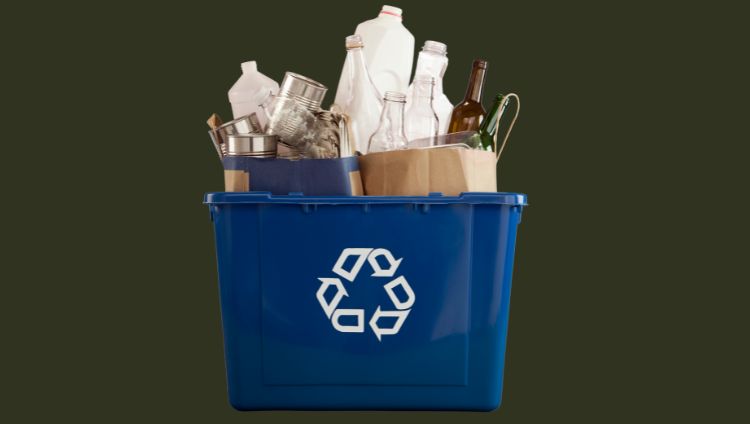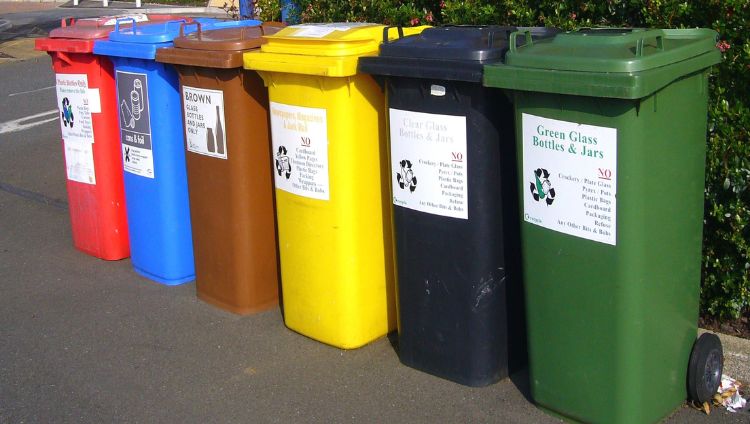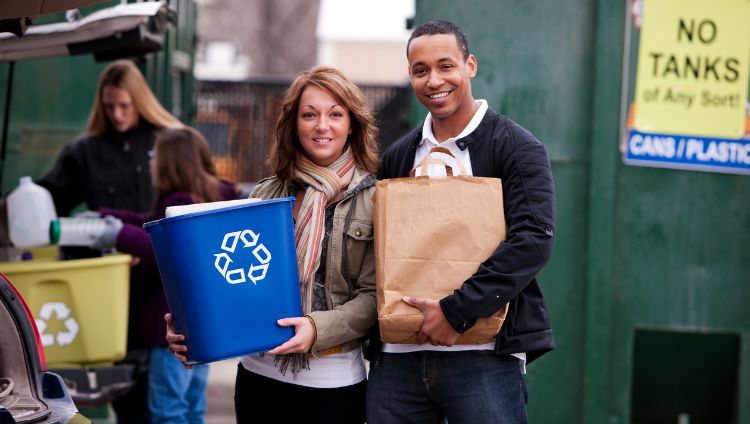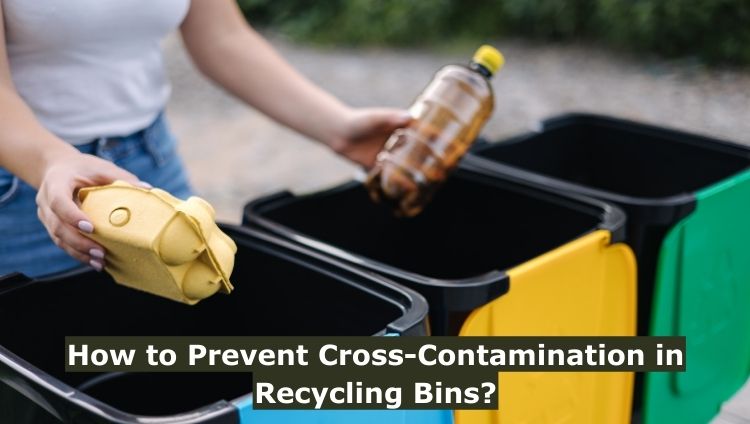Preventing cross-contamination in recycling bins is crucial to ensure the effective sorting and processing of recyclable materials.
Cross-contamination occurs when non-recyclable items or the wrong types of recyclables are mixed in with the correct materials.
This can lead to contamination of the entire batch, making recycling more difficult and less efficient. Here’s how to prevent cross-contamination in recycling bins.
Help People Learn
It’s essential to educate everyone in your community about what belongs in recycling bins to ensure proper recycling practices are followed.
Using visuals such as photographs, informative brochures, and user-friendly websites can make this educational effort easier, clearly demonstrating the correct recycling methods.
As highlighted in Innovative Technologies Being Used for Efficient Waste Disposal and Recycling. This approach clearly demonstrates the correct recycling methods.
When people understand these guidelines, they can actively contribute to recycling initiatives.
Make Bin Signs Easy to Understand
Put clear labels on the recycling bins. These labels should show pictures and words that tell everyone which things can be put in each bin. This way, people can know right away what belongs where.
Let’s Make Recycling Easier with Single-Stream Recycling
Sometimes, it’s a great idea to use something called “single-stream recycling.”
This means that you can put all your recyclables, like paper, plastic, and glass, into just one big recycling bin.
It’s like a super-bin for recycling. This way, there’s less chance of mixing up things in the wrong bins, which can happen if we have lots of separate bins for different materials.
So, single-stream recycling makes recycling simpler and helps us avoid mistakes.

Let’s Add Some Color to Recycling
Picture vibrant bins in every color of the rainbow, turning recycling into a fun adventure! Each color represents a specific type of recyclable: for example, blue bins for paper and green ones for glass. This system assigns a clear spot for every recyclable item.
Seeing these colorful bins makes it easy to know where things go, almost like playing a delightful matching game! This method simplifies waste sorting for everyone, helping to create a cleaner and happier planet.

Make It Easy for Things We Can’t Recycle
To help with stuff that can’t be recycled, we can put special bins close by, like trash bins. This way, it’s super easy for everyone to put things that can’t be recycled in the right place.
When we have these bins nearby, it reminds us to throw away things that can’t go in the recycling bin, so we keep things neat and tidy.
It’s all about making it simple for everyone to do the right thing.
Related Post: What does Waste Management do with Recycling?
Keep Things Clean for Recycling
Related Post: How to Reduce Waste in Your Daily Life?

Public Awareness Campaigns

Make Sure Things Get Sorted Right
We can work together with the committed waste management team to refine effective techniques for sorting materials accurately, assisting them at every stage of the organized recycling process.
Furthermore, we can conduct regular visits to recycling centers to monitor compliance with guidelines, akin to collaboratively reviewing tasks for optimal execution. This will promote accurate sorting and enhance the efficiency of the recycling process. Ultimately, this partnership seeks to keep our planet clean and safeguard its natural beauty.
Team up with local shops
Work together with nearby stores to encourage the right way to recycle. They can show details at their places or have spots to collect recyclables.
Keep the rules fresh
Make sure to update the recycling rules regularly, especially when things change in how we recycle locally and what stuff can be recycled.
Frequently Asked Questions
What is cross-contamination in recycling?
Cross-contamination occurs when non-recyclable items mix with recyclables, making it difficult to recycle correctly. This can happen when people place items in recycling bins that shouldn’t be there.
How can I prevent cross-contamination in recycling bins?
Preventing cross-contamination is essential for effective recycling. Here are some tips:
Check Recycling Guidelines: Familiarize yourself with your local recycling guidelines. These guidelines provide a list of items that can and cannot be recycled in your area.
Empty and Rinse Containers: Before recycling, make sure containers like bottles and cans are empty and rinse them if needed. This removes food residue, which can contaminate other recyclables.
No Plastic Bags: Avoid putting recyclables in plastic bags, as these can jam recycling equipment. Instead, place items directly in the recycling bin.
Keep Hazardous Materials Out: Items like batteries, electronics, and chemicals should not be placed in recycling bins. These can be harmful and disrupt the recycling process.
Can I recycle greasy pizza boxes?
No, greasy pizza boxes can’t be recycled because the oil and food residue can contaminate other recyclables. It’s best to put them in the trash.
Is it okay to recycle plastic bags with other recyclables?
No, plastic bags should not be put in your regular recycling bin. They can cause issues at recycling centers by getting caught in the machinery. Instead, take them to special drop-off spots at stores that accept plastic bags for recycling.
Conclusion
How to Prevent Cross-Contamination in Recycling Bins is a crucial step in making our waste management system more sustainable and effective. By putting in place clear education and communication plans, offering easy ways to dispose of waste properly.
Always keeping an eye on and improving recycling programs, we can greatly lessen the harmful effects of cross-contamination on our recycling attempts.
Each person’s dedication to following recycling rules is vital for saving important resources, lessening harm to the environment, and forming a cleaner, more eco-friendly future for the next generations.
By coming together and adopting responsible recycling habits, we can all contribute to creating positive changes in our communities.
To attain a more comprehensive comprehension of efficacious waste management strategies, we invite you to explore the content available on our Blog.


